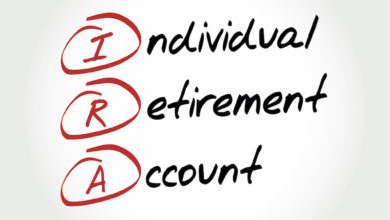2023 December Decisions: Year-End Effective Tax Planning for Retirees

“Every task, goal, race and year comes to an end…therefore, make it a habit to FINISH STRONG.” -Gary Ryan Blair.
As the year draws to a close and the holiday season looms ahead, retirees must take into account their annual tax planning opportunities. Year-end taxation can be an essential step in making sure that seniors have both sufficient resources for retirement as well as the insight needed to make informed financial decisions. Let’s look at how those approaching or within retirement age should consider required minimum distributions, gift taxes, estate taxes, and more when it comes to effective year-end tax planning.
Key Takeaways
- Retirees should understand RMDs from traditional retirement accounts, such as IRAs and 401(k)s.
- Maximize retirement account contributions through catch-up contributions and HSAs to reduce taxable income.
- Utilize the annual gift tax exclusion, lifetime exemption, Roth IRA conversions, and state taxes for optimal financial security.
Understanding Required Minimum Distributions (RMDs) for Retirees
For retirees aiming to reduce their tax liability and maintain a solid financial situation, it is essential that they understand the concept of required minimum distributions (RMDs). These mandatory withdrawals come from traditional retirement accounts such as IRAs or 401(k)s. We will explore RMDs for different types of retirement accounts, with an emphasis on Roth IRAs. We’ll discuss qualified charitable distributions (QCD), which offer unique chances to lower one’s taxable income.
Traditional IRA and 401(k) RMDs
Starting at the age of 72, retirees must take their Required Minimum Distributions (RMDs) from both traditional IRA and 401(k) accounts by December 31 each year. The Internal Revenue Service (IRS) provides a life expectancy factor to calculate the RMD amount based on account balance. Failing to do so carries penalties up to 25% unless it is promptly rectified [1].
Donor-advised funds present an effective option for tax savings when managing these distributions while still providing charitable giving opportunities.
Roth IRA RMDs
Tax-free withdrawals can be made from a Roth IRA upon reaching 59 1/2, provided that it has been held for at least five years. This makes these accounts very attractive to retirees who don’t have to worry about Required Minimum Distributions (RMDs) in their lifetime. To ensure compliance with regulations and maximize tax savings, seeking professional tax advice is highly recommended when dealing with money within the account.
Qualified Charitable Distributions (QCDs)
Retirees who utilize qualified charitable distributions (QCDs) can donate their Required Minimum Distributions directly to a qualified charity, helping them decrease their taxable income and tax liability while still making generous donations. The maximum donation allowed each year is $100,000. This method does offer the benefits of lowered taxes as well as exempting these contributions from taxation [2].
Maximizing Retirement Account Contributions

Retirees can gain great tax savings by maximizing their contributions to retirement accounts such as 401(k)s, traditional IRAs, and Health Savings Accounts (HSAs). We will look at catch-up contributions and HSAs that allow individuals over 50 years old the opportunity to add more money into their retirement funds for additional tax benefits.
Catch-up Contributions
Individuals aged 50 or above will continue to have a valuable opportunity to bolster their retirement savings through catch-up contributions. These catch-up contributions allow for additional payments that can be made to 401(k) plans and IRAs, going beyond the standard contribution limits. However, it’s important to anticipate that in 2024, this limit is expected to remain at $7,500. This maintains a compelling option for those in this age group who aim to further secure their financial future during retirement in the year ahead.
Catch-up contributions give senior citizens an opportunity to make up for any saving options they may not have taken advantage of when younger by adding more money into their retirement accounts than is normally allowed.
“Do not save what is left after spending, but spend what is left after saving.” – Warren Buffett
Health Savings Accounts (HSAs)
Retirees can take advantage of HSAs to reduce their taxable income and lower their overall tax liability. Through an HSA, one is eligible for tax-free investment earnings as well as being able to make contributions that are tax deductible while also making qualified medical expenses through withdrawals without incurring taxes. Maximizing the use of Health Savings Accounts provides retirees with numerous ways they can benefit from these financial instruments in terms of reducing or eliminating certain types of taxation on related investments and activities made throughout retirement years.
Tax-Loss Harvesting Strategies for Retirees

Have you heard of tax-loss harvesting? It’s a method used to sell off investments that are underperforming, incurring a loss, which can then be used to offset your capital gains, ultimately reducing your overall tax burden.
It can help retirees postpone income taxes by reinvesting the proceeds in order to maintain their portfolio balance. The idea behind this tactic is for individuals to benefit from reduced taxation on earnings when they offload underperforming stocks or bonds.
Selling Underperforming Investments
Retirees who sell their underperforming investments while following the wash sale rule can use tax-loss harvesting to reduce taxes on investment earnings and minimize capital gains liability. By avoiding purchases of substantially identical securities within 30 days before or after a loss trade date, this strategy helps offset any potential losses from taxation.
Reinvesting Proceeds Wisely
After selling investments that have not performed well, it is imperative to judiciously reinvest the income from these assets in order to retain a balanced portfolio. Utilizing tax-loss harvesting when investing again can help diversify and sustain one’s preferred asset allocation – this procedure provides compounding returns as time goes on, which could lead to increased total investment returns ultimately.
Reinvesting proceeds correctly ensures retirement portfolios stay even and are structured for future progressions.
Charitable Giving and Tax Planning

What about charity? Tax planning that includes donating appreciated assets such as stocks and bunching charitable giving can help retirees take advantage of greater tax benefits. By organizing their donations this way, they can also assist causes while maximizing the deductions available on itemized taxes.
“Charity is not about ‘giving to’ – it’s about ‘being with.’ When you help someone, the energy you send out comes back to you.” – Susan Vreeland
Donating Appreciated Assets
Retirees can take advantage of tax benefits by donating appreciated assets, such as stocks, to their chosen charities. This enables them to avoid paying capital gains taxes on the appreciation of said asset and receive a charitable deduction for its fair market value, thus reducing their overall tax liability while helping support causes they care about [3].
Bunching Charitable Contributions
Retirees can take advantage of “bunching” to maximize their tax savings on charitable contributions. By donating multiple years’ worth in a single year, they have the potential to exceed what would normally be covered by the standard deduction and benefit from greater deductions than usual. Bunching donations is particularly beneficial for those with fluctuating income levels or trying to minimize Social Security taxation.
Estate and Gift Tax Planning for Retirees

Retirees may benefit from tax savings by taking advantage of the annual gift tax exclusion and lifetime gift tax exemption when planning their estate. Through strategic use of these exemptions, retirement gifts can be protected from both types of taxation while still allowing beneficiaries to receive them. So why is it important to know about this? Because this option for gifting and its associated exclusions can lead to significant financial benefits for retirees looking into effective estate and gift-tax management plans.
Annual Gift Tax Exclusion
Unlock the gift of financial generosity in style! Retirees, rejoice! The annual gift tax exclusion is your golden ticket to support loved ones without a hint of tax hassle. You can share the love with gifts up to $17,000 each year, absolutely tax-free! Embrace the joy of giving, seize those generous tax benefits, and let your fiscal savvy sparkle. It’s not just about sharing; it’s about maximizing your financial advantage while ensuring your nearest and dearest get a piece of the prosperous pie. Cheers to savvy giving and smart tax moves! [4]
Lifetime Gift Tax Exemption
The lifetime gift tax exemption allows individuals to make gifts of up to $12.92 million without incurring any estate or gift taxes, thus allowing for optimal utilization of their tax benefits and estate planning strategies. This maximum amount exempts retirees from facing the burden of paying extra in the form of gift taxation on monies they wish to give away during their lifetime. [5]
Roth IRA Conversions for Retirees

For retirees, conversions to a Roth IRA can result in tax-free distributions upon retirement and lower taxes later on. We will explore the potential advantages of these withdrawal strategies concerning different taxation brackets as well as other possible associated tax outcomes.
Tax-Free Withdrawals
Roth IRA conversions enable individuals to benefit from tax-free withdrawals during retirement. Converting money into a Roth account incurs taxes upfront, but it shields earnings and payouts for later on when one may find themselves in a higher taxation tier. Taking advantage of these kinds of accounts helps retirees secure their financial future and stay aware of any potential liabilities related to taxes.
Conversion Strategies
When it comes to Roth IRA conversions, consulting with a tax specialist is key for creating the best course of action. Making sure that the amount converted will not put one into a higher tax bracket can help avoid an exorbitant charge on taxes. By managing this process wisely, retirees have more control over their taxation and can use its advantages in retirement while minimizing their liability overall.
Tax Planning for Social Security Benefits

Turn up the golden vibes in your retirement symphony! Social Security is your stage, and tax planning is the spotlight that ensures you keep more of what’s rightfully yours. Navigate the rhythm of your golden years by strategically claiming benefits and hitting those revenue sweet spots. Let’s make tax season a breeze and keep your Social Security dance in full swing, minimizing the tax owed on those well-deserved payments. It’s not just planning; it’s orchestrating a tax-friendly encore for your retirement melody!
Timing of Benefit Claims
It is important to consider that the decision of when to start claiming Social Security can have a major impact on overall retirement income. If individuals claim benefits before they reach full retirement age, their monthly payments will be lower. If they wait and take them after reaching full retirement age, the amount received per month increases. Thus, carefully selecting when to begin collecting social security plays an important role in total income over the course of one’s retirement life.
Income Thresholds
Knowing the income thresholds associated with one’s adjusted gross income is important when considering taxes on Social Security benefits. Individuals making between $25,000 and $34,000 in ordinary income could face taxation of up to 50% on their benefits, while couples earning between $32,000 and $44,000 are liable for paying tax as much as 85% [6]. Being aware of these thresholds can be beneficial when trying to decrease the amount paid out towards taxes and planning ahead financially.
State Tax Considerations for Retirees

When considering taxes as a retiree, relocating to a tax-friendly state could help lessen one’s overall burden. Examining state income taxes may allow retirees to realize potential savings due to the reduced tax payments.
State Income Taxes
Retirees must factor in state income taxes into their retirement plans as the taxation rate on pensions, Social Security benefits, and withdrawals from 401(k)s or IRAs can be moderate to high. It is imperative that they understand how these taxes will affect them because it could potentially cause an unwanted, weighty tax burden. Some states have no such taxation of retiree incomes while others do – thus, knowledge about this is key when deciding where one should reside during post-career days. To better prepare themselves, retirees ought to take time to study each applicable state’s level of taxation before settling down after life’s long professional journey ends.
Relocating for Tax Savings

Retirees should analyze all the aspects before choosing to move from a high-tax state to one with low or no income tax for potential significant financial savings. This includes researching property and sales taxes, plus considering climate, job market, and overall cost of living in that area as well.
The Institute of Financial Wellness: End of Year Tax Planning Advice

The Institute of Financial Wellness assists retirees with their end-of-year tax planning, empowering them to maximize savings and secure a stronger financial future. Our advice helps make sure all decisions regarding taxes and retirement are made wisely so that no advantage is missed in terms of potential tax reductions or increased security.
Full Summary
Year-end tax planning is a crucial part of retirement that allows retirees to save on taxes, boost their financial prosperity, and make sound decisions about the future. This can be achieved through maximizing contributions to retirement accounts, harvesting losses for additional deductions while still meeting required minimum distributions (RMDs), employing strategies like Roth IRA conversions, participating in charitable giving, and looking into estate/gift taxes as well as state taxation.
Frequently Asked Questions
What is the best tax strategy in retirement?
The best tax strategy in retirement is to withdraw first from taxable accounts, then tax-deferred accounts, and lastly, Roth accounts. Diversifying your income sources, investing tax-efficiently in a brokerage account, and taking advantage of long-term capital gains rates can help reduce taxes further.
Additionally, living in or moving to a tax-friendly state, reallocating investments, and postponing distributions may also help minimize taxes in retirement.
At what age is Social Security no longer taxed?
Depending on the amount of income received, Social Security benefits can be subject to taxation regardless of age. The IRS has set a maximum threshold beyond which withholding may occur if Social Security payments are combined with other forms of revenue.
How can I reduce my taxable income at the end of the year?
To lower taxable income, you can maximize your contributions to a pre-tax retirement account such as an IRA or 401(k), delay receiving any earnings until the next tax year, use losses from investments against gains for offsets in taxes, and be aware of different types of potential taxation (e.g., kiddie tax) when taking distributions from traditional IRAs. It is important to consider flexible spending accounts, which may reduce total taxable income further.
What is the current annual gift tax exclusion amount?
Every year, the annual gift tax exclusion allows a person to give away up to $17,000 free from any taxation.
How can I minimize taxes on my Social Security benefits?
Timing the claiming of your Social Security benefits and knowing which income thresholds are taxed can help reduce how much in taxes you have to pay.
Scott Rosen is the Executive Vice-President and Research Champion of the IFW. Scott is a 30-year veteran of the financial services industry.






